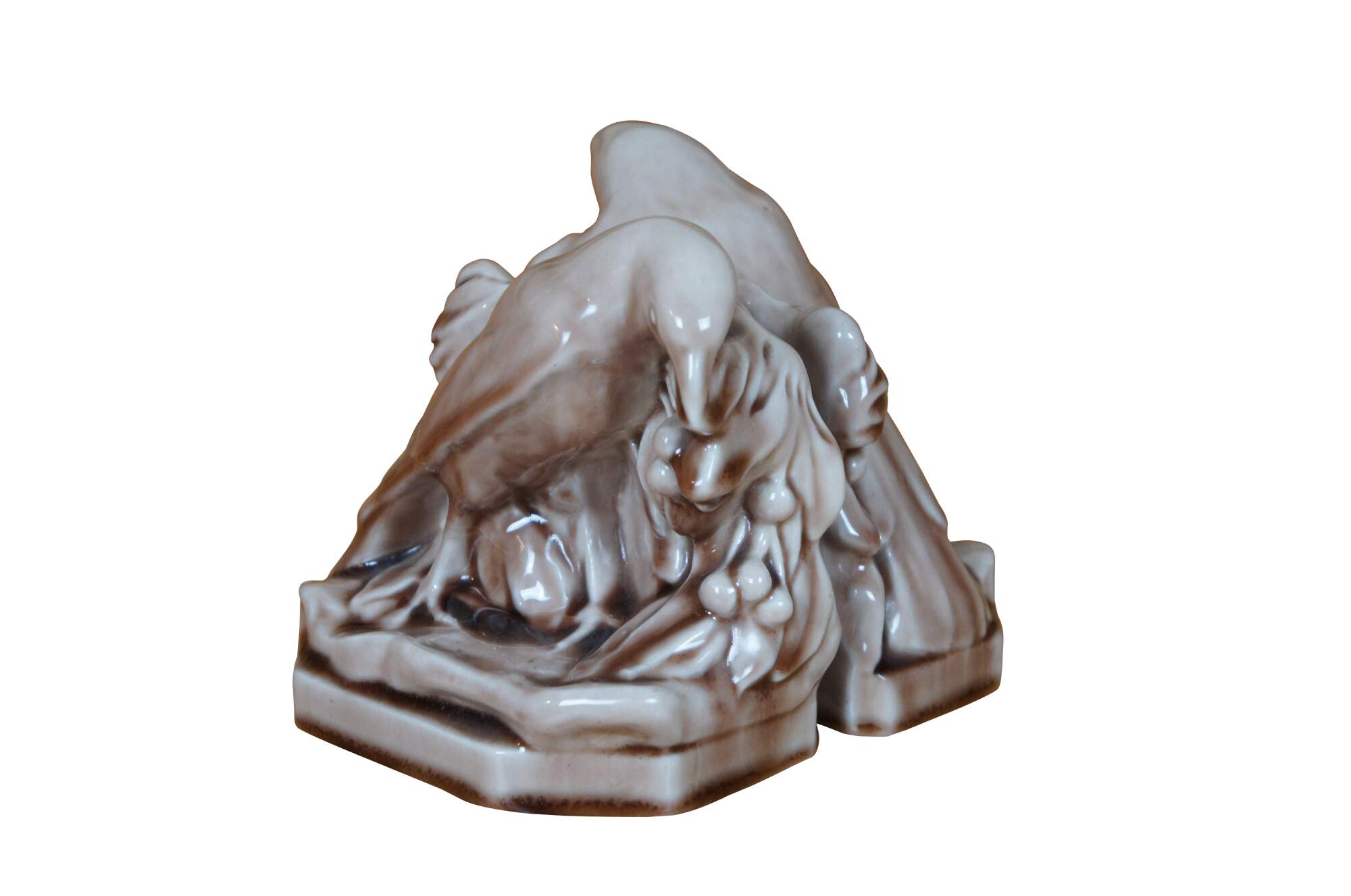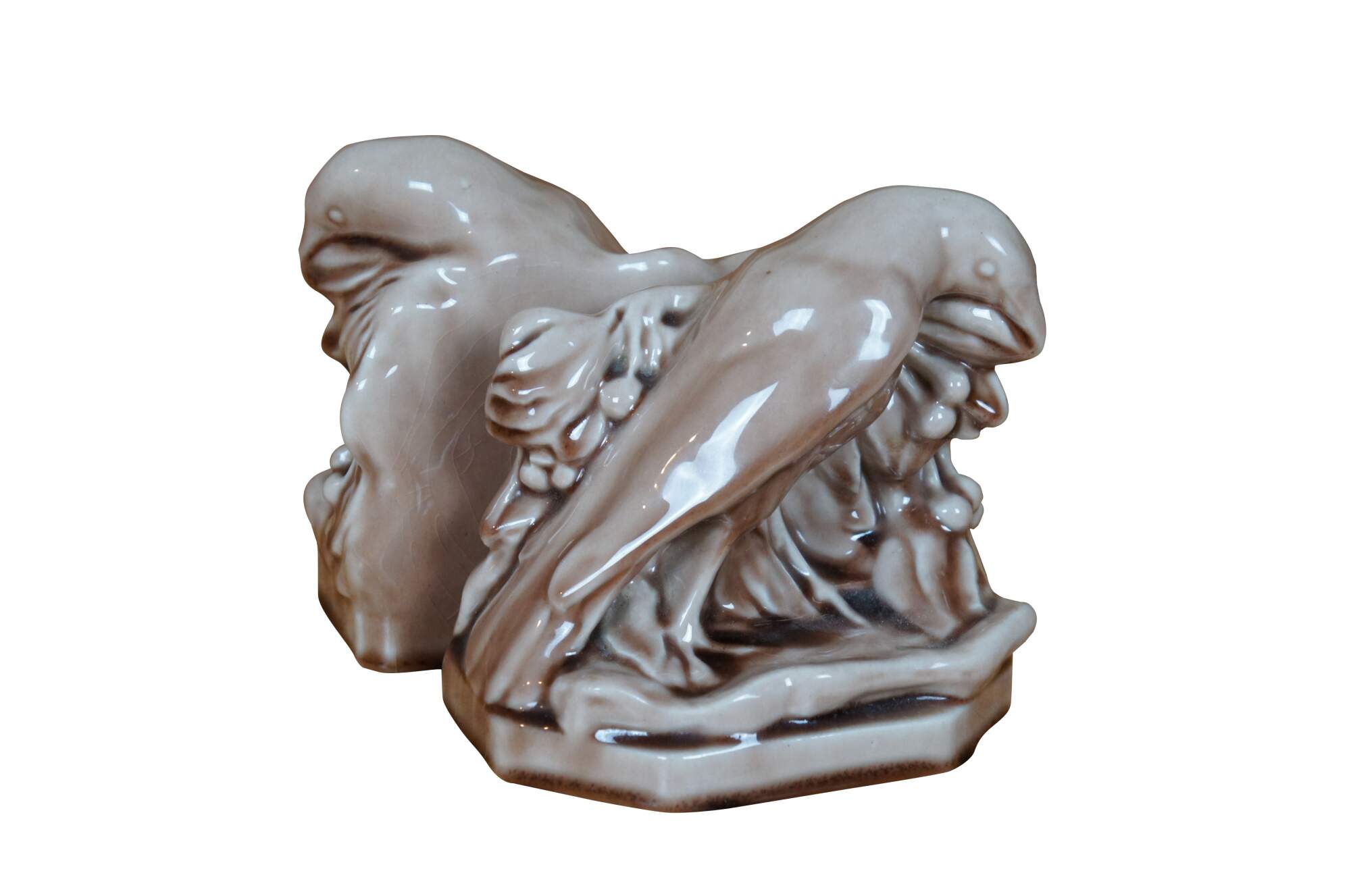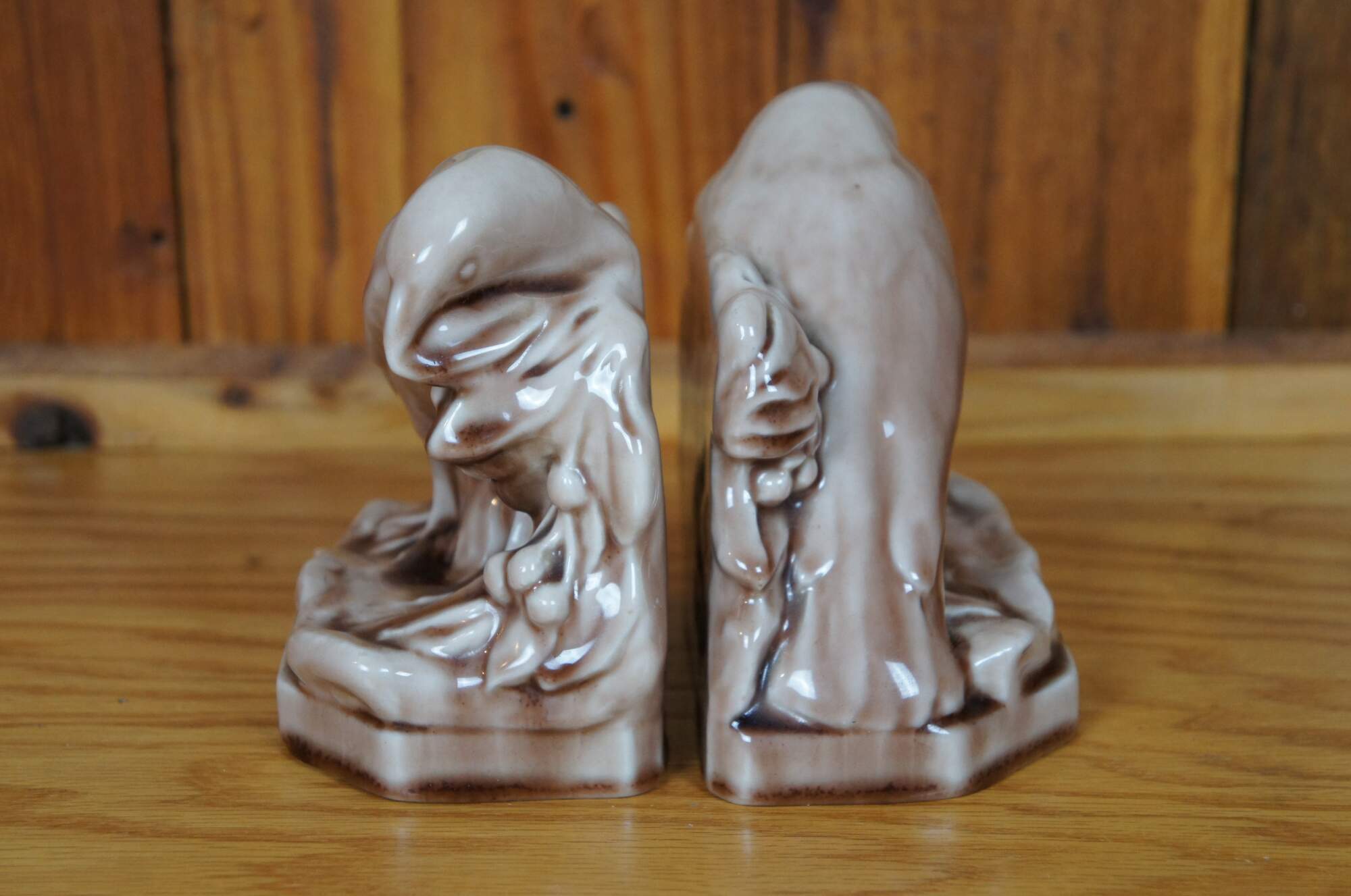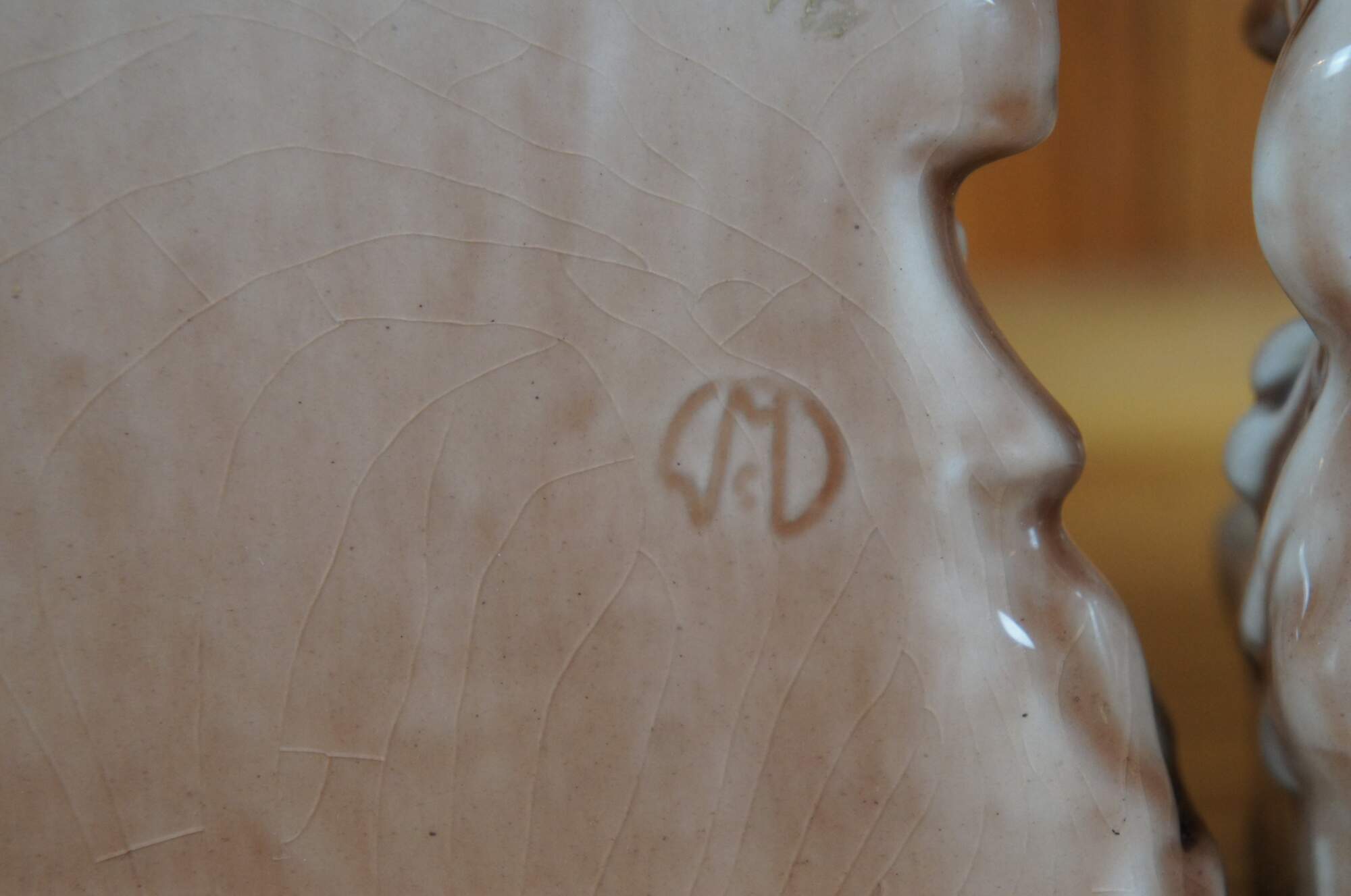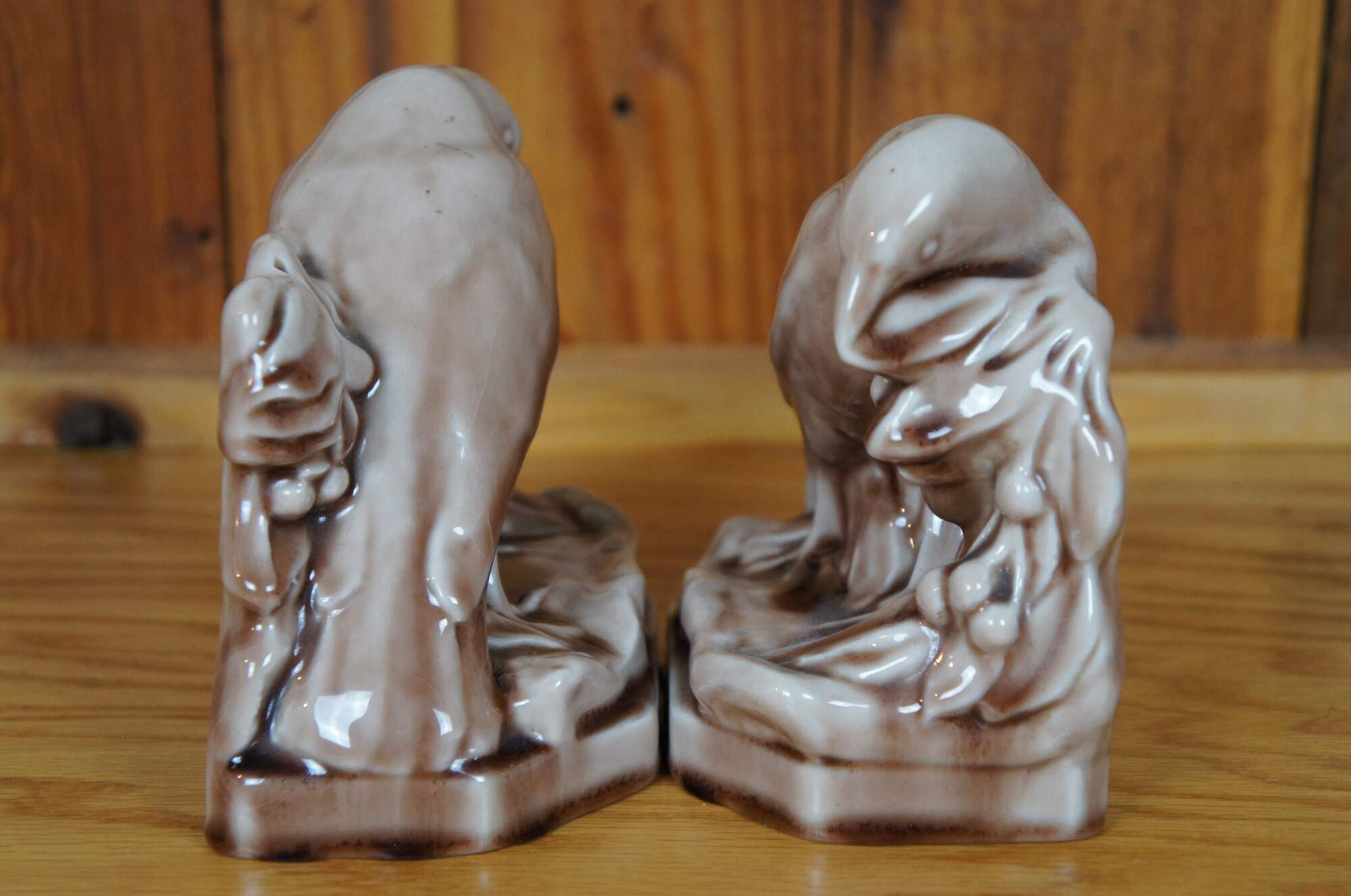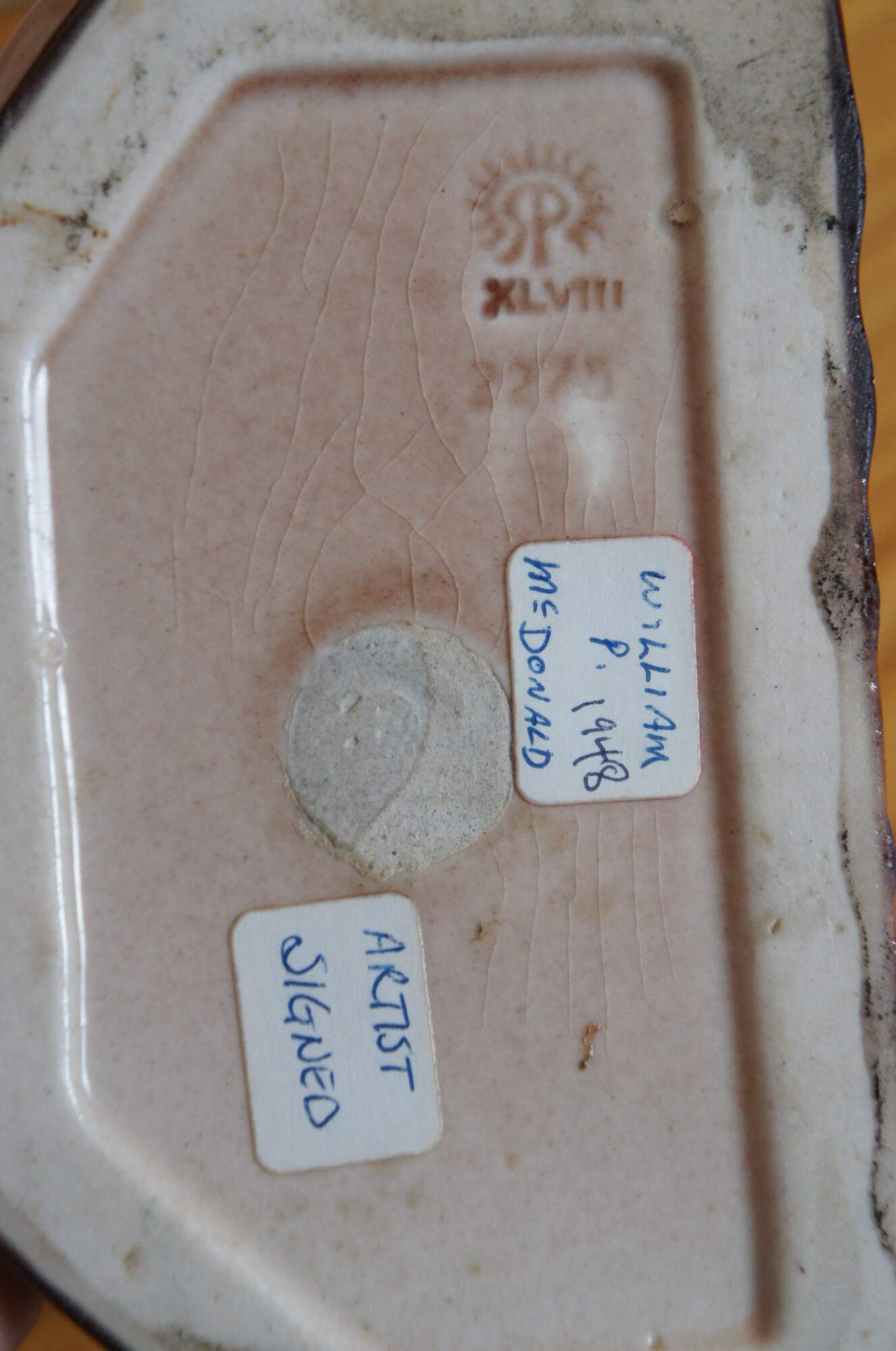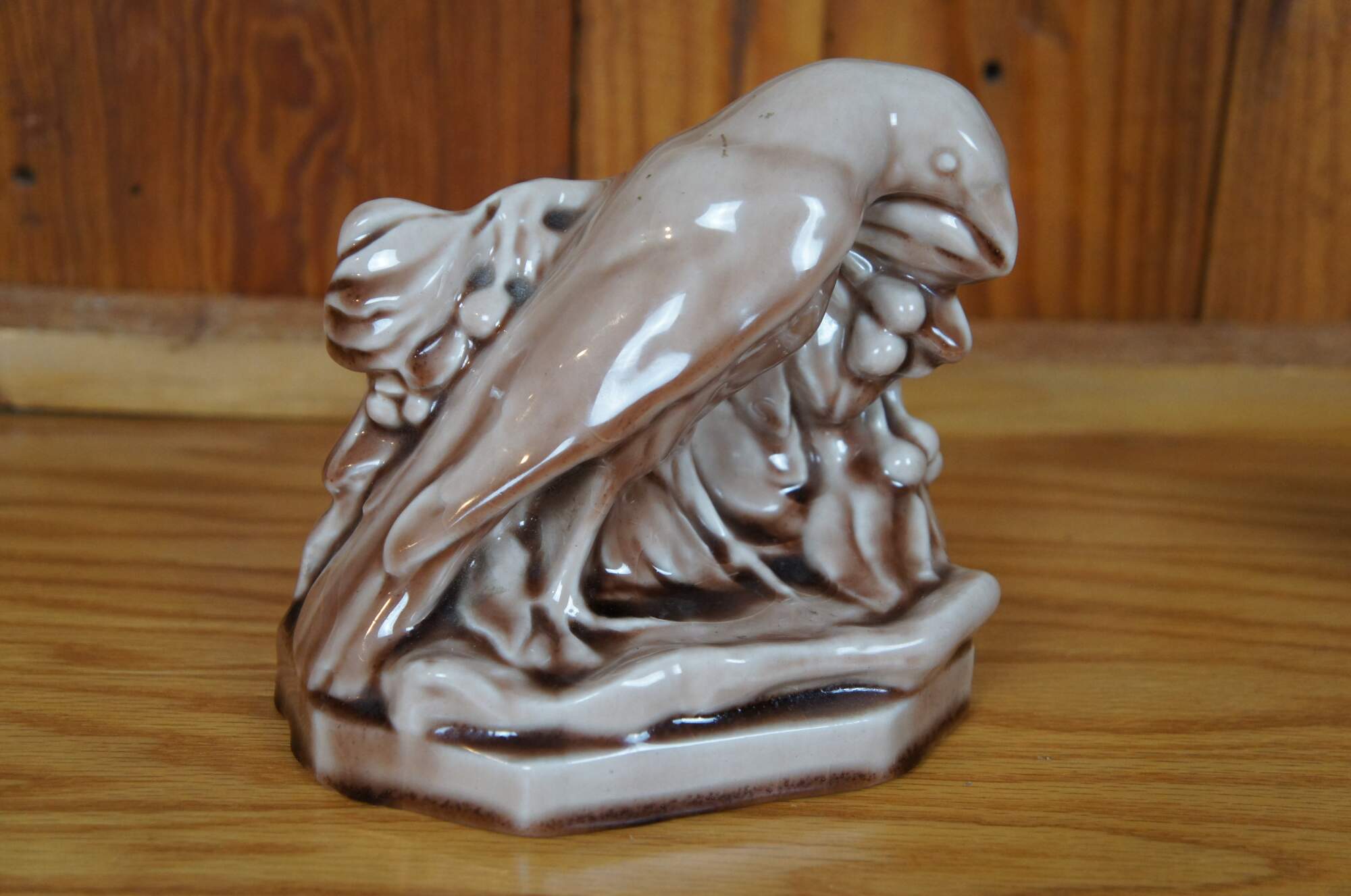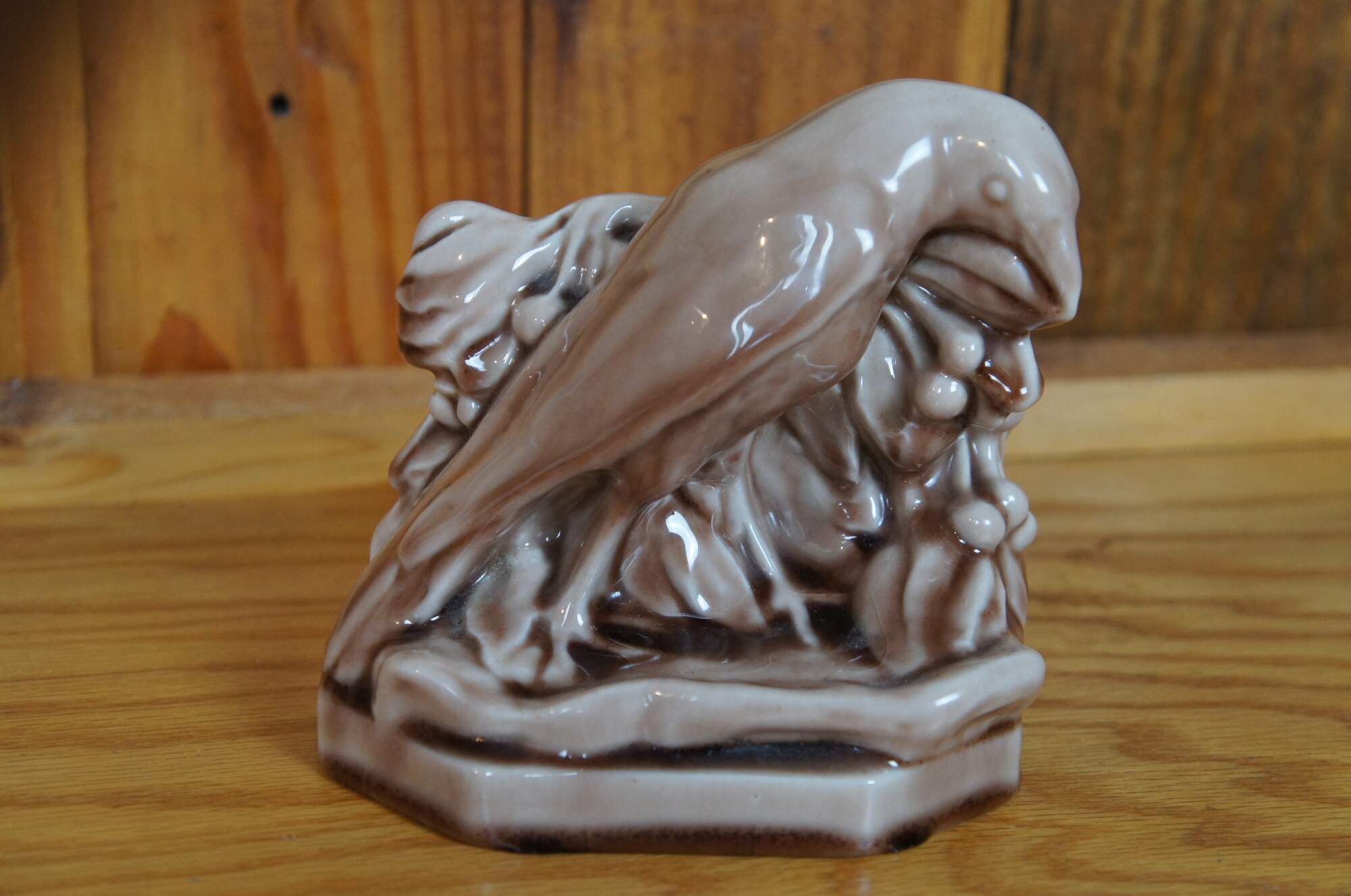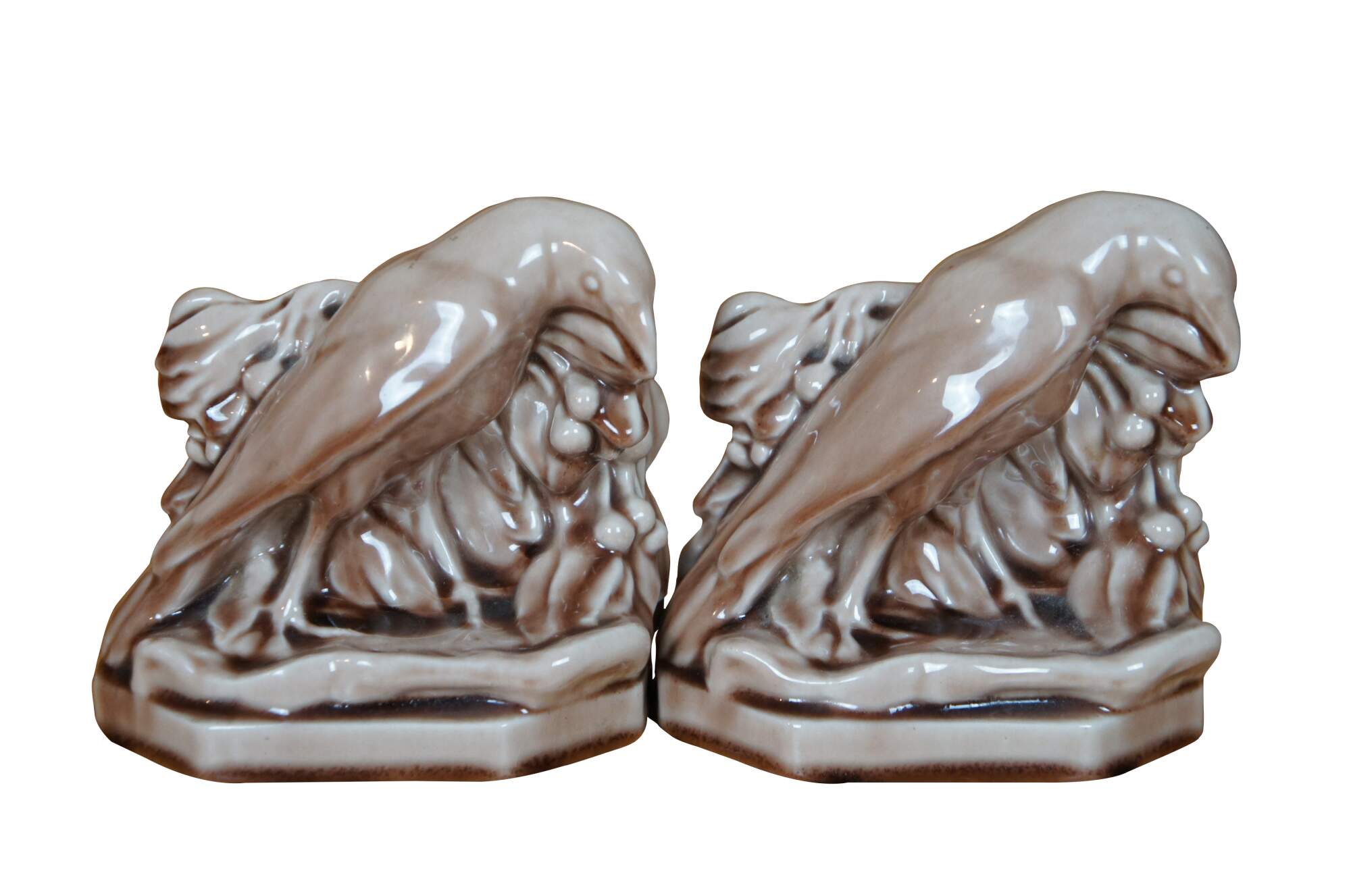
Rookwood William McDonald 1948 XLVIII Rook Bird Raven Library Bookends 5"
$480.00
Shipping:
Free Shipping Included
Delivery:
Estimated 2-15 Business Days
Payments:
Credit Card, Check, Cash, PayPal, Apple Pay, Venmo
Returns:
30 Days 100% Money Back Guarantee, Buyer Pays Return Shipping
Description
Mid century Rookwood raven / rook bird bookends by William P McDonald. Circa 1948. Shape 2278.
William Purcell McDonald was born in Cincinnati on September 18, 1864. He joined Rookwood pottery in 1882, one of the earliest of the artists employed there. In 1904 he was promoted to the head of the architectural department, although he continued to produce pieces until his death in 1931. His daughter Margaret Helen McDonald began working there under his tutelage in 1913. Collector interest in his pieces is considered to be above average.
Margaret Helen McDonald, the daughter of the famous Rookwood artist William McDonald, was born in Cincinnati, Ohio in 1893. She joined her father decorating pieces in 1913, and continued until 1948. Her work spans many styles and many glazes over the years. She died in 1964 in Cincinnati, Ohio. Collector interest in her pieces is considered to be average.
Ravens and rooks are both large black birds in the corvid family, but they have several distinguishing features, including size, behavior, and appearance.
Behavior
Ravens are playful and often seen in pairs or small family groups. Rooks are social birds that spend much of the year in large groups, feeding, roosting, and nesting together.
Appearance
Ravens have a diamond-shaped tail, shaggy throat feathers, and a thick, black bill. Rooks have a pale, dagger-shaped bill, a bare, grey-white patch of skin at the base of their bill, and "baggy trousers" of feathers around their legs.
Voice
Ravens have a low-pitched, ringing voice that's similar to a human voice. Rooks have an even-pitched, flat, "caw-caw" call that they often make while pitching their body forwards.
Habitat
Ravens are mainly found in coastal and upland areas in the west and north, and are less common than crows and rooks. Rooks are amber listed for conservation concern, and their numbers dropped by around 20% between 1995 and 2020.
The rook (Corvus frugilegus) is a member of the family Corvidae in the passerine order of birds. It is found in the Palearctic, its range extending from Scandinavia and western Europe to eastern Siberia. It is a large, gregarious, black-feathered bird, distinguished from similar species by the whitish featherless area on the face. Rooks nest collectively in the tops of tall trees, often close to farms or villages; the groups of nests are known as rookeries.
Rooks are mainly resident birds, but the northernmost populations may migrate southwards to avoid the harshest winter conditions. The birds form flocks in winter, often in the company of other Corvus species or jackdaws. They return to their rookeries, and breeding takes place in spring. They forage on arable land and pasture, probing the ground with their strong bills and feeding largely on grubs and soil-based invertebrates, but they also consume cereals and other plant material. Historically, farmers have accused the birds of damaging their crops and have made efforts to drive them away or kill them. Like other corvids, they are intelligent birds with complex behavioural traits and an ability to solve simple problems.
Condition
Good Overall - Gentle wear/crazing
Dimensions
5.25" x 3.25" x 5.25" (Width x Depth x Height)
